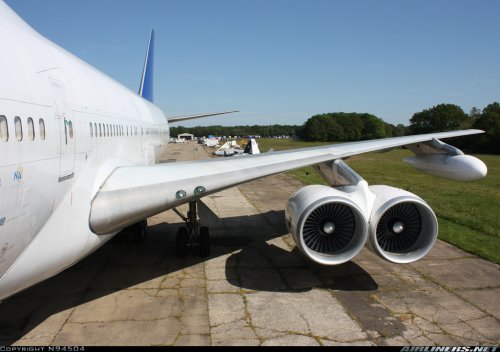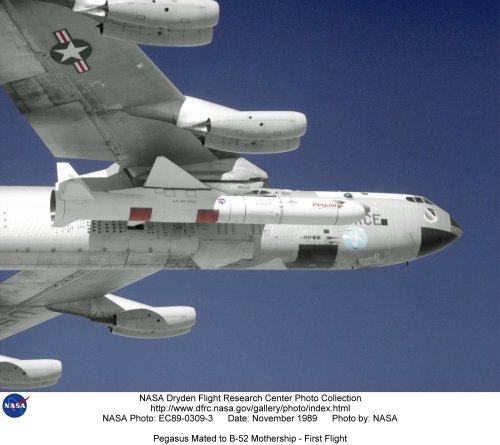Author Kris Osborn claims in a video on this page that the much talked about "arsenal plane" will be an upgraded B-52.
"B-52 Weapons Upgrade to Add More Payload, Range of Weapons"
by Kris Osborn
Yesterday at 7:58 AM
Source:
http://www.scout.com/military/warrior/story/1650624-air-force-b-52-gets-new-attack-weapons
"B-52 Weapons Upgrade to Add More Payload, Range of Weapons"
by Kris Osborn
Yesterday at 7:58 AM
Source:
http://www.scout.com/military/warrior/story/1650624-air-force-b-52-gets-new-attack-weapons
The Air Force is surging forward with a massive, fleet-wide modernization overhaul of the battle-tested, Vietnam-era B-52 bomber, an iconic airborne workhorse for the U.S. military dating back to the 1960s.
Engineers are now equipping all 76 of the Air Force B-52s with digital data-links, moving-map displays, next-generation avionics, new radios and an ability to both carry more weapons internally and integrate new, high-tech weapons as they emerge, service officials said.
The technical structure and durability of the B-52 airframes in the Air Force fleet are described as extremely robust and able to keep flying well into the 2040s and beyond – so the service is taking steps to ensure the platform stays viable by receiving the most current and effective avionics, weapons and technologies
Weapons Upgrade
The integration of air-to-air weapons on the B-52 does not seem inconceivable given the weapons upgrades already underway with the aircraft. Air Force is also making progress with a technology-inspired effort to increase the weapons payload for the workhorse bomber, Eric Single, Chief of the Global Strike Division, Acquisition, told Scout Warrior in an interview last year.
The 1760 Internal Weapons Bay Upgrade, or IWBU, will allow the B-52 to internally carry up to eight of the newest “J-Series” bombs in addition to carrying six on pylons under each wing, he explained.
B-52s have previously been able to carry JDAM weapons externally, but with the IWBU the aircraft will be able to internally house some of the most cutting edge precision-guided Joint Direct Attack Munitions and Joint Air-to-Surface Standoff Missiles, among others.
“It is about a 66 percent increase in carriage capability for the B-52, which is huge. You can imagine the increased number of targets you can reach, and you can strike the same number of targets with significantly less sorties,” said Single.
Single also added that having an increased internal weapons bay capability affords an opportunity to increase fuel-efficiency by removing bombs from beneath the wings and reducing drag.
The first increment of IWBU, slated to be finished by 2017, will integrate an internal weapons bay ability to fire a laser-guided JDAM. A second increment, to finish by 2022, will integrate more modern or cutting-edge weapons such as the Joint Air-to-Surface Standoff Missile, or JASSM, JASSM Extended Range (ER) and a technology called Miniature Air Launched Decoy, or MALD. A MALD-J “jammer” variant, which will also be integrated into the B-52, can be used to jam enemy radar technologies as well, Single said.
IWBU, which uses a digital interface and a rotary launcher to increase the weapons payload, is expected to cost roughly $313 million, service officials said.
The B-52 has a massive, 185-foot wingspan, a weight of about 185,000 pounds and an ability to reach high sub-sonic speeds and altitudes of 50,000 feet, Air Force officials said.
Communications, Avionics Upgrades
Two distinct, yet interwoven B-52 modernization efforts will increase the electronics, communications technology, computing and avionics available in the cockpit while simultaneously configuring the aircraft with the ability to carry up to eight of the newest “J-Series” precision-guided weapons internally – in addition to carrying six weapons on each wing, Single said.
Eight B-52s have already received a communications (coms systems) upgrade called Combat Network Communication Technology, or CONECT – a radio, electronics and data-link upgrade which, among other things, allows aircraft crews to transfer mission and targeting data directly to aircraft systems while in flight (machine to machine), Single explained.
“It installs a digital architecture in the airplane,” Single explained. “Instead of using data that was captured during the mission planning phase prior to your take off 15 to 20 hours ago – you are getting near real-time intelligence updates in flight.”
Single described it key attribute in terms of “machine-to-machine” data-transfer technology which allows for more efficient, seamless and rapid communication of combat-relevant information.
Using what’s called an ARC 210 Warrior software-programmable voice and data radio, pilots can now send and receive targeting data, mapping information or intelligence with ground stations, command centers and other aircraft.
“The crew gets the ability to communicate digitally outside the airplane which enables you to import not just voice but data for mission changes, threat notifications, targeting….all those different types of things you would need to get,” Single said.
An ability to receive real-time targeting updates is of great relevance to the B-52s close-air-support mission because fluid, fast-moving or dynamic combat situations often mean ground targets appear, change or disappear quickly.
Alongside moving much of the avionics from analogue to digital technology, CONECT also integrates new servers, modems, colored display screens in place of old green monochrome and provides pilots with digital moving-map displays which can be populated with real-time threat and mission data, Single said.
The new digital screens also show colored graphics highlighting the aircraft’s flight path, he added.
Single explained that being able to update key combat-relevant information while in transit will substantially help the aircraft more effectively travel longer distances for missions, as needed.
“The key to this is that this is part of the long-range strike family of systems — so if you take off out of Barksdale Air Force Base and you go to your target area, it could take 15 or 16 hours to get there. By the time you get there, all the threat information has changed,” said Single. “Things move, pop up or go away and the targeting data may be different.”
The upgrades will also improve the ability of the airplane to receive key intelligence information through a data link called the Intelligence Broadcast Receiver. In addition, the B-52s will be able to receive information through a LINK-16-like high-speed digital data link able to transmit targeting and Intelligence, Surveillance and Reconnaissance, or ISR information.
The CONECT effort, slated to cost $1.1 billion overall, will continue to unfold over the next several years, Single explained.
Twelve B-52 will be operational with CONECT by the end of this year and the entire fleet will be ready by 2021, Single said.
B-52 History
Known for massive bombing missions during the Vietnam War, the 159-foot long B-52s have in recent years been operating over Afghanistan in support of military actions there from a base in Guam.
The B-52 also served in Operation Desert Storm, Air Force statements said. “B-52s struck wide-area troop concentrations, fixed installations and bunkers, and decimated the morale of Iraq's Republican Guard,” an Air Force statement said.
In 2001, the B-52 provided close-air support to forces in Afghanistan during Operation Enduring Freedom, service officials said. The B-52 also played a role in Operation Iraqi Freedom. On March 21, 2003, B-52Hs launched approximately 100 CALCMs (Conventional Air Launched Cruise Missiles) during a night mission.
Given the B-52s historic role in precision-bombing and close air support, next-generation avionics and technologies are expected to greatly increase potential missions for the platform in coming years, service officials said.






